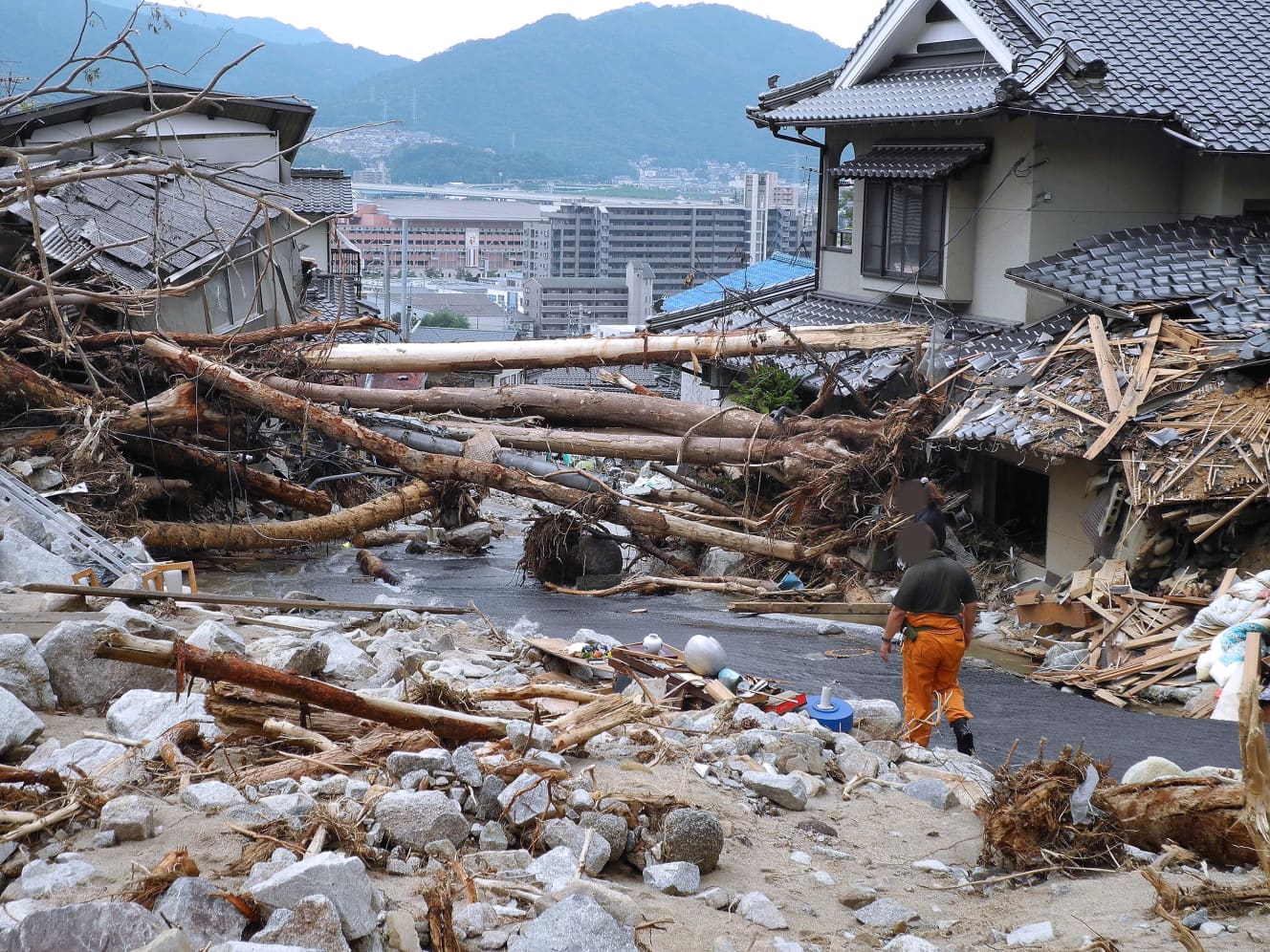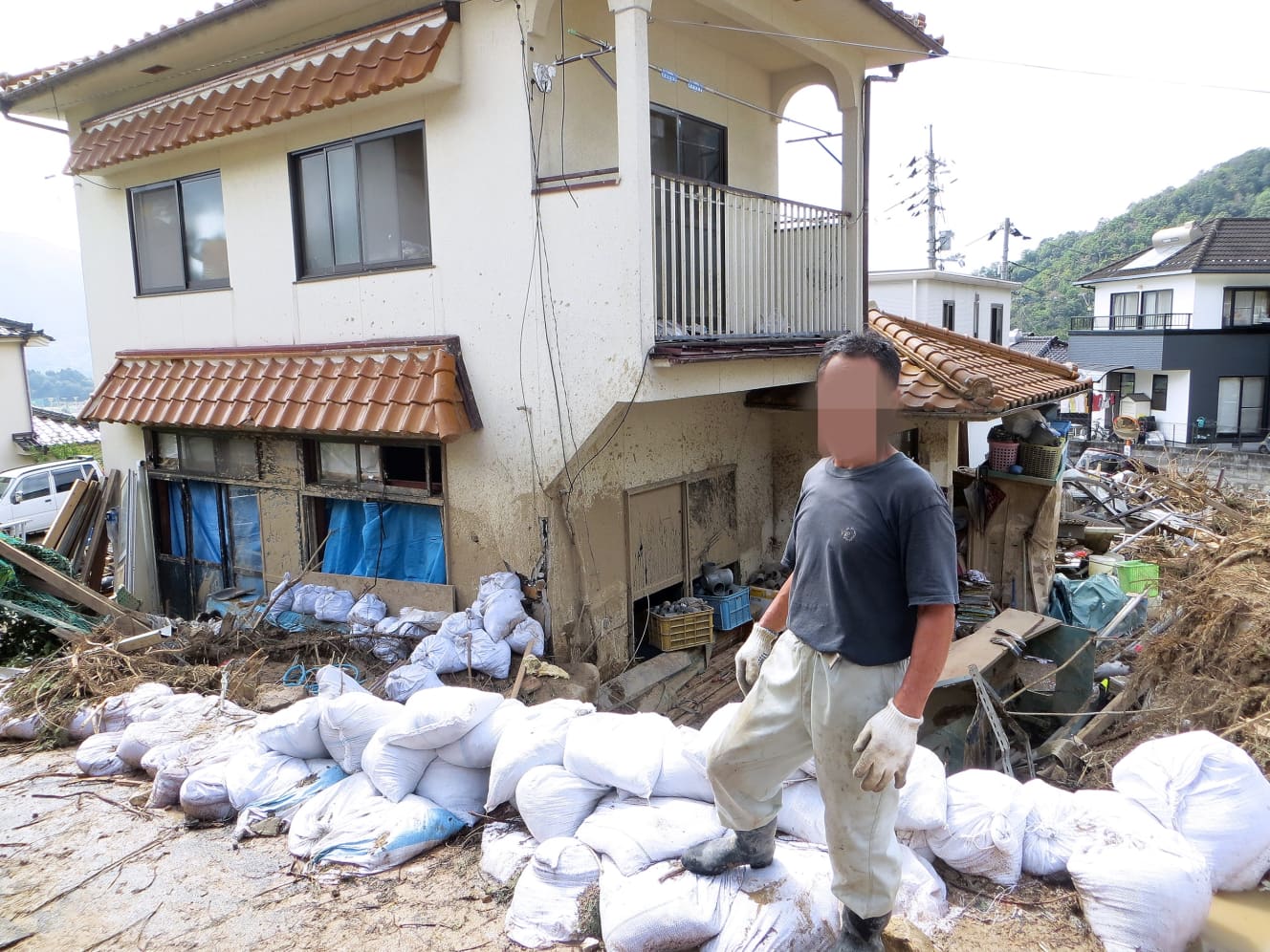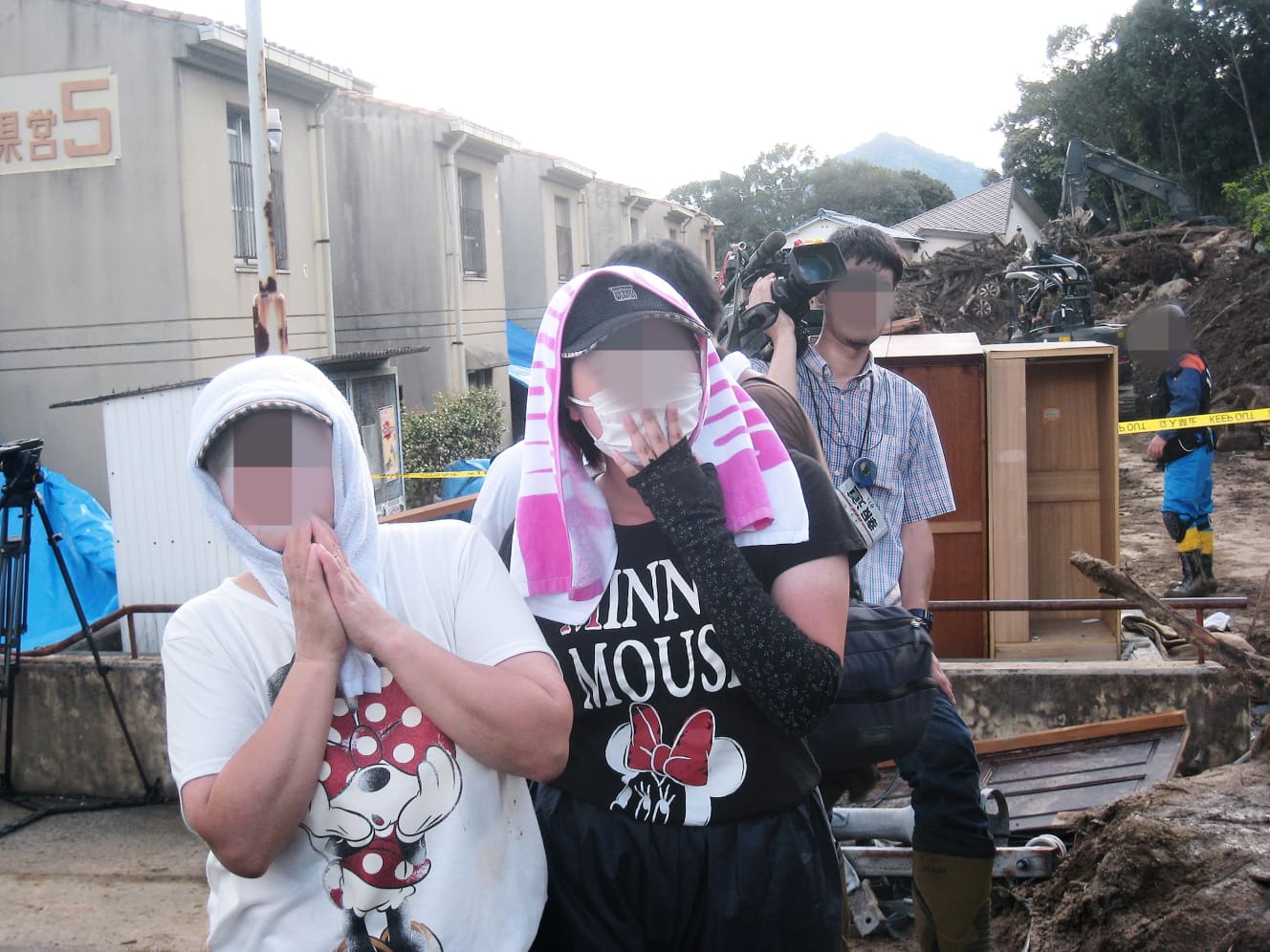Playback ’14] “A One-meter-high Rock Crashes Through a Wall” – Lamentations of Survivors of the Hiroshima Landslide Disaster

What did “FRIDAY” report 10, 20, or 30 years ago? In “Playback Friday,” we take a look back at the topics that were hot at the time. This time, we will introduce a report from 10 years ago, in the September 12, 2002 issue, entitled “All-out Reporting on the Hiroshima Landslide Disaster: Voices, Voices, Voices of Lamentation at the Scene of Despair and Search…”.
The unprecedented torrential rains that hit northern Hiroshima from the night of August 19 to the dawn of August 20, 2002, triggered massive mudslides that engulfed residential areas along the mountains. The magazine walked the site of the disaster a little more than a week after it occurred. (Descriptions in parentheses are quoted from previous articles.)
If I had stood there, I would have died.
This is how the article recounts the situation in the disaster area at that time.
The Yagi area on the mountain side of the JR Kabe Line was severely damaged. Sandbags were piled up everywhere, and water was flowing between them. A man (70 years old at the time of the disaster) recounts the night of the disaster: “I was sleeping with my wife on the first floor.
He said, “I was sleeping on the first floor with my wife. Then my daughter, who was sleeping on the second floor, came downstairs screaming, ‘Something’s wrong! ‘ I opened the curtains in a panic and saw the path before me. I rushed to open the curtains, and a car was passing by on the road in front of us. Then there was a bang and a crash, and a one-meter-high rock crashed through the wall right next to the stairs and came tumbling down. If I had been standing there, I would have died. My wife panicked and ran to the kitchen! The stairs! The water was already up to her knees on the first floor.
Another man, 77, who lost his 48-year-old son in the same area, said, “I lost my son who was living alone.
I’m currently sorting through the belongings of my son, who lived alone. He was buried beside a parking lot about 5 meters from his house. The firefighters found him, his face covered in sludge and cuts. I soaked a handkerchief in water and wiped his face many times, just to clean him up. Tears naturally welled up in my eyes. ……
The areas that suffered particularly severe damage were Asaminami Ward, which includes the Yagi and Midorii districts, and the Kabehigashi district of Asakita Ward. A total of 500,000 m3 of debris flowed into these areas. The average speed of the mudslide was 40 km/h. The instantaneous maximum speed was over 140 km/h. The average speed was 40 kilometers per hour, and the maximum speed at the moment was over 140 kilometers per hour.
“I was sleeping when the mud and sand suddenly came pouring in. I was caught in the furniture and wasn’t swept outside, but when I came to, I couldn’t see my wife. After it became light, she was found standing and trapped on the bridge portion of the ditch 200 meters below. There were no signs of suffering on her face. The suffering may have lasted 30 or 40 seconds. The medical report said he had suffocation and several broken bones.”
Mr. S., 80, of Midorii, was in the disaster area with his family, dressed in mourning clothes, speaking in a quiet tone. He had just completed the seventh-day memorial service for his wife Noriko, 77, who had passed away. His son, who lived with him, said, “Maybe my mother took everyone’s place.
I think my mother might have taken the place of all of us. I don’t really feel (death), even though ……
Bodies washed away toward the A-bomb Dome
When I went to the Kabe district, north of the Yagi district, I found residents quietly engaged in recovery work. They were making sandbags, shoveling out sand, removing debris, and piling sandbags. …… No matter how much work they did, progress was slow. There was not enough manpower to do the work.
It’s already a war zone!”
said Mr. K., 59, whose family is working together on the restoration. The reporter offered to help him make sandbags and interviewed him during a break.
He said, “We’ve been working from 7:00 in the morning until dark to prevent secondary disasters, and at night we live in an evacuation center. The levees deep in the mountains are useless because they are filled with sand and soil. The river burst its banks and a tremendous mudslide came down. The water pipe burst.
About 50 meters from Mr. K’s house, a house collapsed, killing a person.
An elderly couple and their daughter lived there. The next morning, the neighbors discussed the possibility of rescuing them, but the mudslide was so severe that there was nothing they could do. Another old man, about 80 years old, who lived in another house, was found dead after being swept down the river to the A-bomb Dome. I’ve lived here for 60 years. It still feels like a dream.
At that time, the typhoon season was approaching while recovery work was not progressing well. Mr. T., 54, of the Yagi area, who had been living as an evacuee with his family of five, including his wife, two children, and mother, recounted the following.
“I left home that night and initially tried to escape by car. From a distance it looked like flat land, but in fact it was a big puddle of muddy water. If I had driven into it, I would have died. We left the car behind and headed for the shelter barefoot with my family. Even now, my wife and mother do not want to go back to the house where we lived. If I’m with them, they will go home to get things, but if I’m alone, they say, ‘I’m too scared to go. It rains, doesn’t it? When it rains, she gets scared.
Another mother rushed from another prefecture to see her daughter and her husband, whose safety was unknown at the time of the interview. More than a week after the disaster, the victims and their bereaved families were still not at ease.
More than 200 people died in the torrential rains of 2006.
The search for the missing continued for another three weeks, and the death toll of 77 (including three disaster-related deaths) was the largest for a landslide disaster in the past 30 years. Originally, there was little flat land in Hiroshima City, and the city had been developing residential land since the 1970s due to population growth. The affected area was one where new residential areas had developed up to the edge of the mountains.
In the Yagi area, which was particularly hard hit, it was pointed out that erosion control dams had not been built, the designation of the area as a landslide disaster prevention zone had not progressed due to opposition from land owners, and evacuation advisories were issued too late, all of which contributed to the spread of the damage. Today, erosion control dams are being constructed and the law has been revised to allow designation of disaster areas without the consent of local communities. At the same time, however, there are still 120,000 people in Hiroshima Prefecture who live in “special landslide hazard zones,” where the risk is particularly high.
In addition, the term “linear precipitation zone” has become widely used in the media in the wake of the Hiroshima landslide. In recent years, torrential rains caused by linear rainfall belts have occurred every year. The torrential rains that hit western Japan in July 2006 caused damage over a wide area, including Hiroshima, Okayama, and Ehime, and killed more than 200 people. Just the other day, the Noto Torrential Rainstorm that began on September 20 caused extensive damage.
Japan is now constantly exposed to the risk of torrential rain disasters.




PHOTO: Takuya Onogaki, Katsuhiro Owaki, Koichiro Umeki, Shotaro Komada